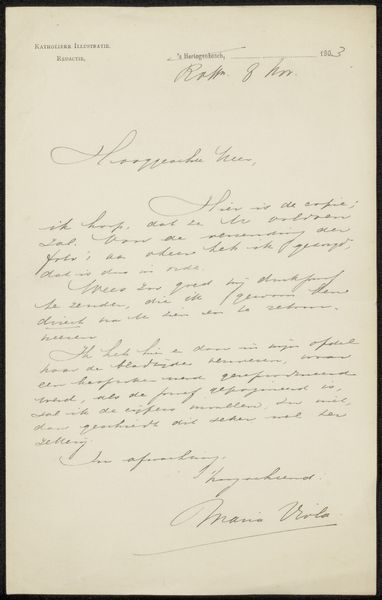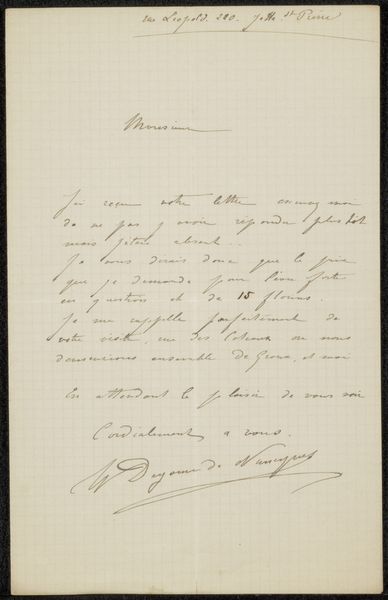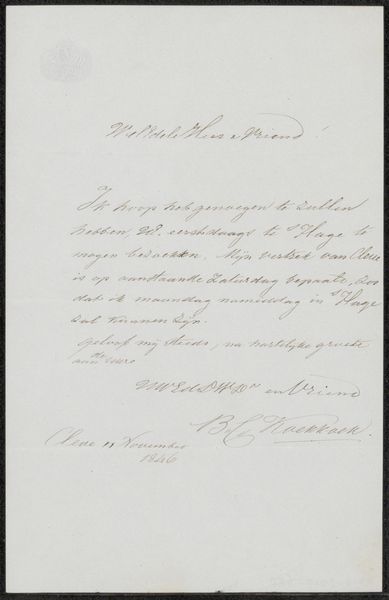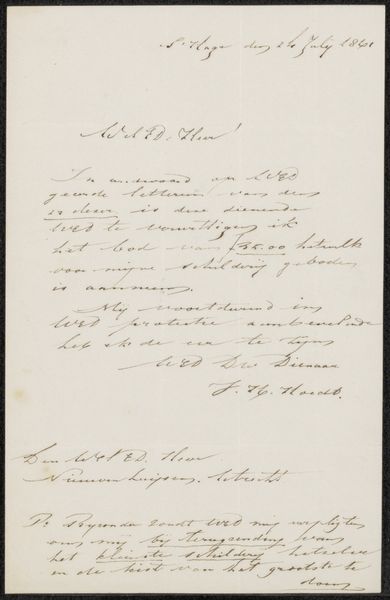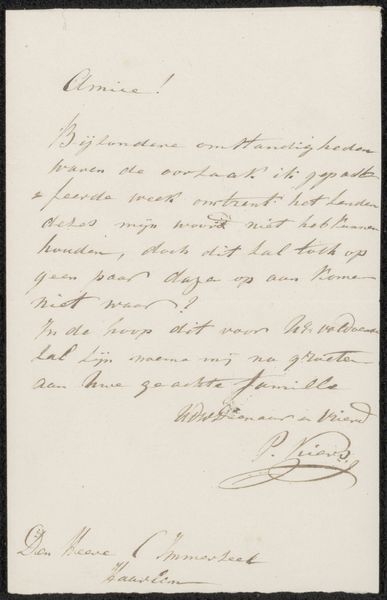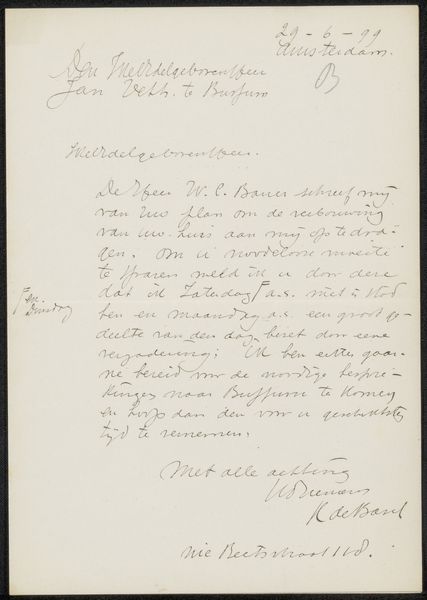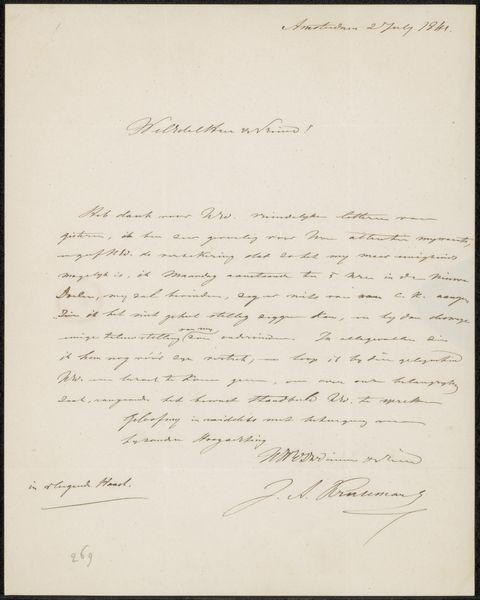
drawing, paper, ink, pen
#
drawing
#
pen sketch
#
old engraving style
#
hand drawn type
#
paper
#
personal sketchbook
#
ink
#
ink drawing experimentation
#
pen-ink sketch
#
ink colored
#
pen work
#
sketchbook drawing
#
pen
#
sketchbook art
#
calligraphy
Copyright: Rijks Museum: Open Domain
This letter was written in 1849 by Johannes Hari to Baron Huibert Gerard Nahuys van Burgst. The fluid, looping script, reminiscent of vines climbing a wall, speaks to a tradition of cultivated correspondence that was central to social and political life. The act of writing itself bears symbolic weight; each stroke of the pen is a gesture, laden with intention and meaning. Notice how the letters swell and taper, mirroring the ebb and flow of emotions. This script is a direct descendant of earlier calligraphic forms, retaining echoes of medieval manuscripts and Renaissance treatises. Consider the act of correspondence as a ritual, a way to bridge distances and forge connections. The black ink on white paper creates a stark contrast, a visual representation of the duality between presence and absence. This interplay of light and shadow can be seen in earlier works, such as religious iconography in Northern Renaissance paintings, where chiaroscuro was used to intensify emotional impact. This carries subconscious associations with knowledge and power, influencing the impact of the message. The act of writing is a powerful expression of human connection, and its cyclical recurrence speaks to our innate desire for communication and communion.
Comments
No comments
Be the first to comment and join the conversation on the ultimate creative platform.


